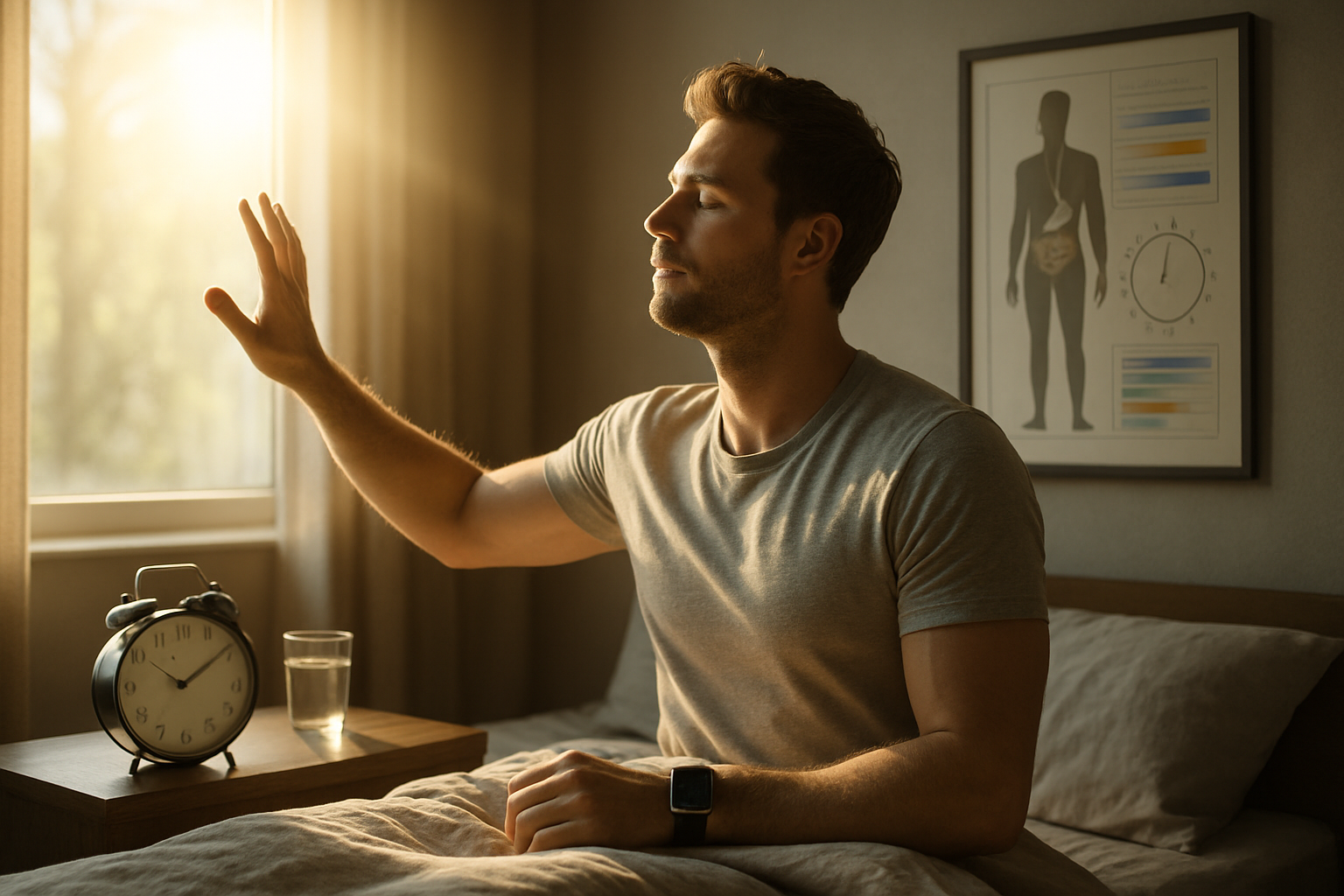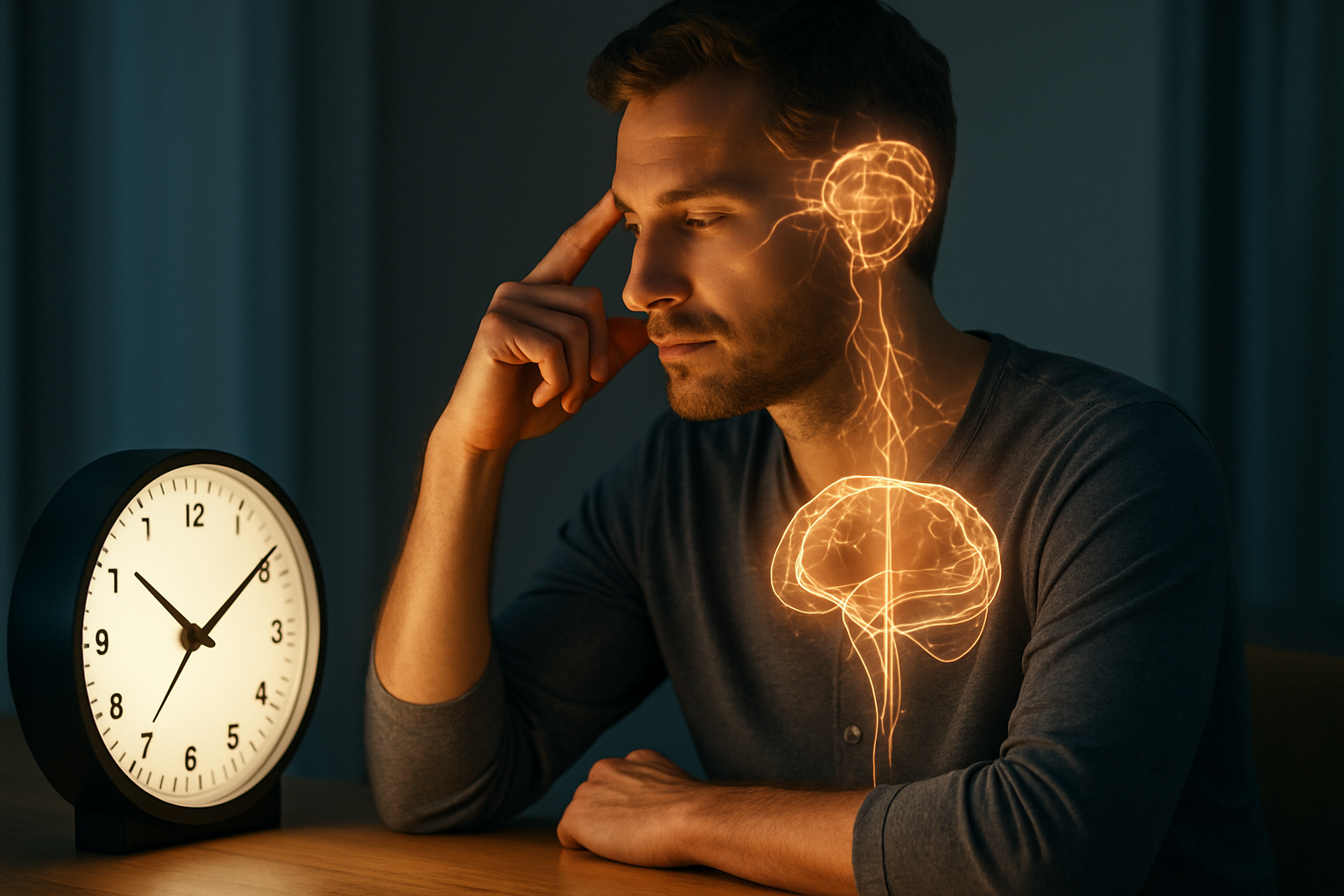Biohacking Your Circadian Rhythm: The Science of Light Exposure
Imagine waking up each morning feeling refreshed, energized, and ready to conquer the day. Now, picture maintaining that vitality throughout your waking hours, only to effortlessly drift into a deep, restorative sleep at night. This isn't a far-fetched dream, but a reality that can be achieved through the art and science of optimizing your circadian rhythm. How? The answer lies in the strategic manipulation of light exposure.

The Evolutionary Dance of Light and Life
Our relationship with light is as old as life itself. For billions of years, organisms have evolved in sync with the sun’s daily cycle, developing intricate biological mechanisms to anticipate and respond to changes in light. This 24-hour internal clock, known as the circadian rhythm, governs countless physiological processes, from hormone production to body temperature regulation.
At the heart of this system lies the suprachiasmatic nucleus (SCN), a tiny region in the brain that serves as our master timekeeper. The SCN receives light signals directly from our eyes, using this information to coordinate the timing of various bodily functions. This delicate synchronization ensures that our bodies are primed for activity during daylight hours and prepared for rest and repair at night.
The Spectrum of Light: More Than Meets the Eye
Not all light is created equal when it comes to influencing our circadian rhythm. The spectrum of light we’re exposed to throughout the day plays a crucial role in regulating our internal clock. Blue light, with its short wavelength and high energy, has the most significant impact on our circadian system.
In nature, blue light is abundant in the morning and early afternoon, signaling to our bodies that it’s time to be alert and active. As the day progresses, the light spectrum shifts towards warmer tones, with more red and less blue light in the evening. This natural progression helps prepare our bodies for sleep by triggering the production of melatonin, our primary sleep hormone.
Chrono-Nutrition: Timing Your Meals with Your Internal Clock
The influence of our circadian rhythm extends far beyond sleep-wake cycles. Recent research has unveiled a fascinating connection between our internal clock and metabolism, giving rise to the field of chrono-nutrition. This emerging area of study explores how the timing of our meals can impact our health and weight management.
Our bodies are primed to process food most efficiently during daylight hours when our metabolism is at its peak. Eating in alignment with our circadian rhythm can lead to improved insulin sensitivity, better weight control, and reduced risk of metabolic disorders. Conversely, late-night snacking or irregular meal times can disrupt our internal clock, potentially contributing to weight gain and other health issues.
The Dark Side of Artificial Light
In our 24/7 society, artificial light has become ubiquitous, allowing us to extend our activities well into the night. While this has brought numerous societal benefits, it has also led to a phenomenon known as “light pollution,” which can wreak havoc on our circadian rhythms.
Exposure to artificial light, especially blue light from electronic devices, during evening hours can suppress melatonin production and trick our bodies into thinking it’s still daytime. This can lead to difficulty falling asleep, reduced sleep quality, and a host of related health issues. The effects of chronic circadian disruption are far-reaching, potentially contributing to conditions such as obesity, diabetes, cardiovascular disease, and even certain types of cancer.
Hacking Your Light Environment for Optimal Health
Armed with this knowledge, we can take proactive steps to optimize our light environment and support our natural circadian rhythm. Here are some evidence-based strategies to help you harness the power of light for better health:
-
Start your day with bright light exposure
-
Use blue light blocking glasses in the evening
-
Create a sleep-friendly environment with minimal light
-
Invest in smart lighting systems that mimic natural light patterns
-
Take regular “light breaks” throughout the day, especially if you work indoors
-
Consider light therapy for mood and sleep disorders
Illuminating Facts: Shedding Light on Circadian Health
-
Our eyes contain special photoreceptors called intrinsically photosensitive retinal ganglion cells (ipRGCs) that directly influence our circadian rhythm
-
Exposure to morning sunlight can help regulate cortisol levels, improving energy and mood throughout the day
-
The color temperature of light is measured in Kelvin (K), with higher temperatures appearing cooler and bluer
-
Red light has the least impact on circadian rhythms and can be used for nighttime illumination without disrupting sleep
-
Spending time in nature can help reset your circadian rhythm due to exposure to natural light patterns
As we continue to unravel the intricacies of our internal clocks, it’s clear that light plays a pivotal role in our overall health and well-being. By becoming more mindful of our light exposure and aligning our daily activities with our natural circadian rhythm, we can unlock a new level of vitality and resilience. Remember, small changes in your light environment can lead to significant improvements in your sleep, mood, and overall health. Embrace the power of light, and let your inner clock guide you towards a brighter, more balanced life.





